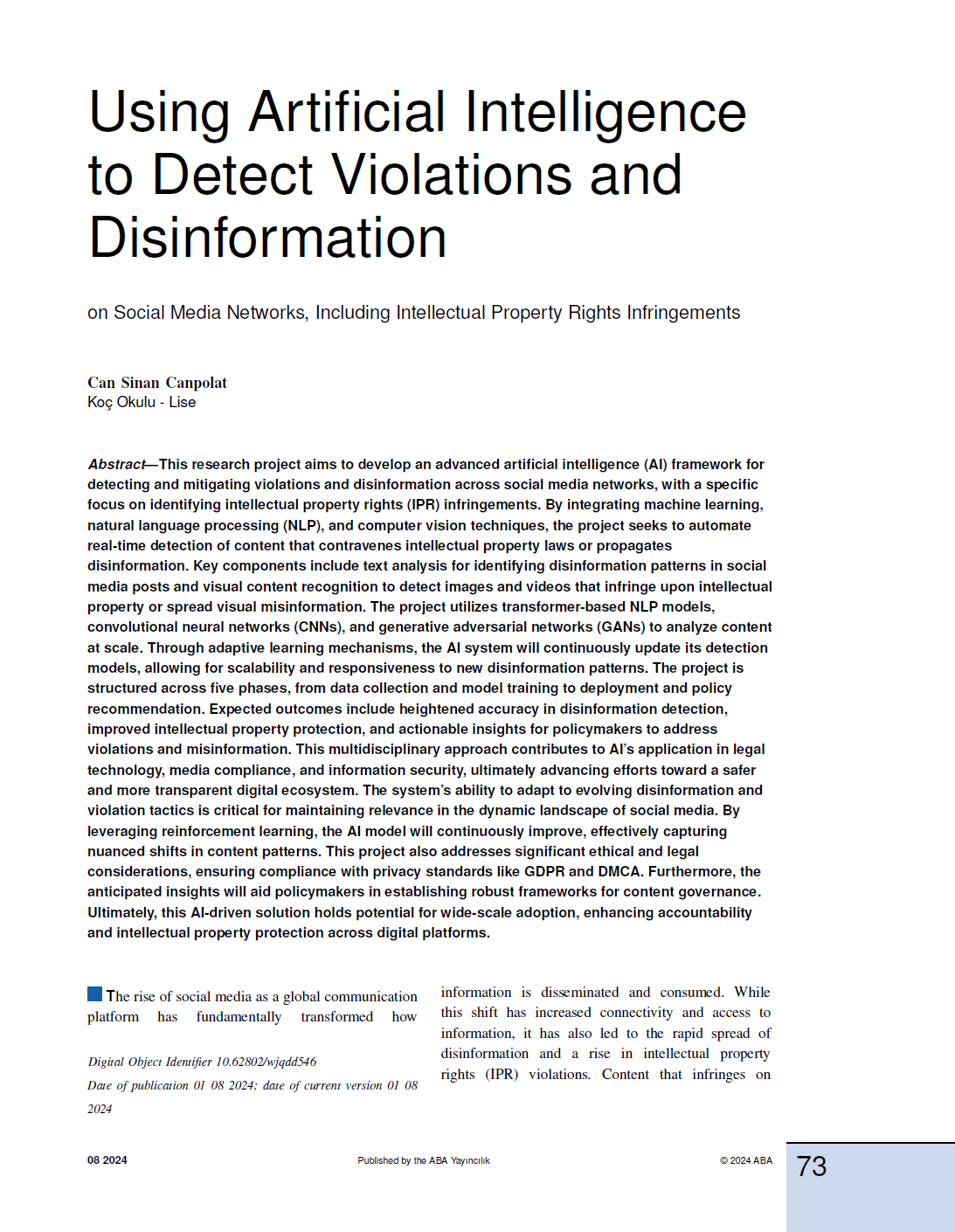Using Artificial Intelligence to Detect Violations and Disinformation on Social Media Networks, Including Intellectual Property Rights Infringements
DOI:
https://doi.org/10.62802/q3zfyr63Keywords:
Artificial Intelligence, Disinformation Detection, Social Media Monitoring, Visual Content Recognition, Disinformation Patterns, Accountability in Social Media, Intellectual Property Rights (IPR) Infringement, Natural Language ProcessingAbstract
This research project aims to develop an advanced artificial intelligence (AI) framework for detecting and mitigating violations and disinformation across social media networks, with a specific focus on identifying intellectual property rights (IPR) infringements. By integrating machine learning, natural language processing (NLP), and computer vision techniques, the project seeks to automate real-time detection of content that contravenes intellectual property laws or propagates disinformation. Key components include text analysis for identifying disinformation patterns in social media posts and visual content recognition to detect images and videos that infringe upon intellectual property or spread visual misinformation. The project utilizes transformer-based NLP models, convolutional neural networks (CNNs), and generative adversarial networks (GANs) to analyze content at scale. Through adaptive learning mechanisms, the AI system will continuously update its detection models, allowing for scalability and responsiveness to new disinformation patterns. The project is structured across five phases, from data collection and model training to deployment and policy recommendation. Expected outcomes include heightened accuracy in disinformation detection, improved intellectual property protection, and actionable insights for policymakers to address violations and misinformation. This multidisciplinary approach contributes to AI’s application in legal technology, media compliance, and information security, ultimately advancing efforts toward a safer and more transparent digital ecosystem. The system’s ability to adapt to evolving disinformation and violation tactics is critical for maintaining relevance in the dynamic landscape of social media. By leveraging reinforcement learning, the AI model will continuously improve, effectively capturing nuanced shifts in content patterns. This project also addresses significant ethical and legal considerations, ensuring compliance with privacy standards like GDPR and DMCA. Furthermore, the anticipated insights will aid policymakers in establishing robust frameworks for content governance. Ultimately, this AI-driven solution holds potential for wide-scale adoption, enhancing accountability and intellectual property protection across digital platforms.References
Al-Zoubi, O. (2024). Artificial intelligence in newsrooms: ethical challenges facing journalists. Studies in Media and Communication, 12(1), 401. https://doi.org/10.11114/smc.v12i1.6587
Hajli, N., Saeed, U., Tajvidi, M., & Shirazi, F. (2021). Social bots and the spread of disinformation in social media: the challenges of artificial intelligence. British Journal of Management, 33(3), 1238-1253. https://doi.org/10.1111/1467-8551.12554
Kingsley, M. (2024). Ai simulated media detection for social media. Int Res J Adv Engg Hub, 2(04), 938-943. https://doi.org/10.47392/irjaeh.2024.0131
Shaik, S. (2023). A review and analysis on fake news detection based on artificial intelligence and data science. tjjpt, 44(3), 3789-3797. https://doi.org/10.52783/tjjpt.v44.i3.2107
Yerden, A. (2024). Using artificial intelligence algorithms to detect hate speech in social media posts. IJONFEST, 2(1), 8-16. https://doi.org/10.61150/ijonfest.2024020102









